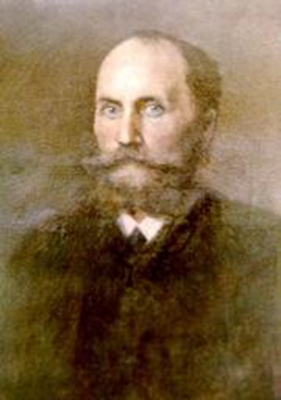Monocularity, mononasality, and maturing
The one-eyed Cyclopes in the Odyssey –
and their eternal companions in our ‘real’, ‘non-mythical’ world – will hardly
be capable of recognising synchronicities. Polyphemus’ single eye must first be
pierced by Ulysses – he must first be blinded – before he can see in
the first place.
“Alas, alas, then the old prophecy [παλαίφατα θέσφαθ᾽] about me is coming true”, the monster cries when
this has finally happened.And he continues saying that
“there was a seer [μάντις] here, at one time, a man both brave and of great
stature, Telemos son of Eurymos, who was an excellent seer [μαντοσύνῃ ἐκέκαστο], and did all the prophesying for the Cyclopes till
he grew old [μαντευόμενος κατεγήρα]; he told me that all this would happen to me [τελευτήσεσθαι] some day, and said I should lose my sight [ἁμαρτήσεσθαι ὀπωπῆς] by the hand of Odysseus.”
And yet, so the Cyclops ends his lamentation,
“I have been all along expecting [ἐδέγμην] some one of imposing presence and superhuman
strength [φῶτα μέγαν καὶ καλὸν], whereas
he turns out to be a little insignificant weakling [ὀλίγος τε καὶ οὐτιδανὸς καὶ ἄκικυς], who has
managed to blind my eye by taking advantage of me in my drink”. (Odyssey 9,
407ff)
Drawing on Franz Rosenzweig, one could contend that Polyphemus, inasmuch as he remains focused upon his monocularity, will not mature and never become the Greisenkopf he only now starts honouring:
“Die Augen sind unter sich nicht etwa mimisch
gleichwertig, sondern während das linke mehr empfänglich und gleichmäßig
schaut, blickt das rechte scharf auf einen Punkt eingestellt; nur das rechte
„blitzt”, – eine Arbeitsteilung, die ihre Spuren schließlich bei Greisenköpfen
häufig auch in die weiche Umgebung der Augenhöhle eingräbt, so daß dann jene
ungleichmäßige Gesichtbildung auch von vorn wahrnehmbar wird, die sonst
allgemein nur an der bekannten Verschiedenheit der beiden Profile auffällt.” (Stern der Erlösung, p. 470)
M. de Cambremer, in Proust’s Sodome et Gomorrhe, will not
mature, either; but this time by virtue of his nasal address:
“Par une transposition de sens, M. de
Cambremer vous regardait avec son nez. Ce nez de M. de Cambremer n’était pas
laid, plutôt un peu trop beau, trop fort, trop fier de son importance. Busqué,
astiqué, luisant, flambant neuf, il était tout disposé à compenser l’insuffisance
spirituelle du regard; malheureusement, si les yeux sont quelquefois l’organe
où se révèle l’intelligence, le nez (quelle que soit d’ailleurs l’intime
solidarité et la répercussion insoupçonnée des traits les uns sur les autres),
le nez est généralement l’organe où s’étale le plus aisément la bêtise.” (Sodome
et Gomorrhe, p. 304f)
(prepublication from Rico Sneller, Into It:
Perspectives on Synchronicity, Inspiration, and the Soul (Cambridge
Publishers 2020, forthcoming)





Reacties
Een reactie posten